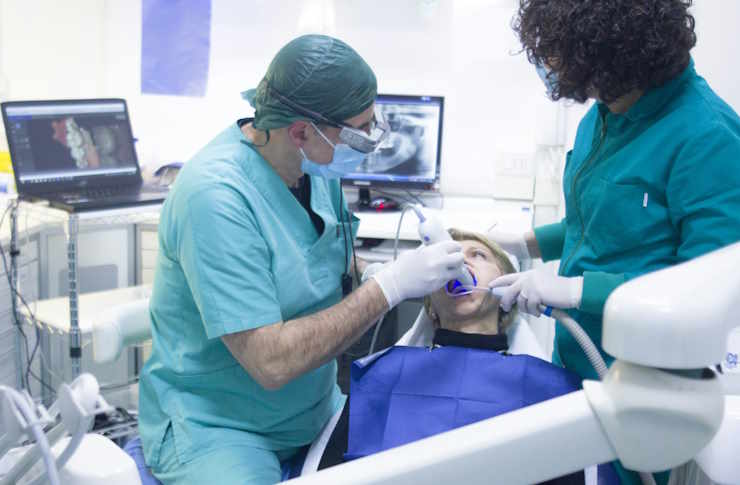2025 Guide to Obtaining a Reliable CDL
In today's fast-paced world, the demand for skilled truck drivers is on the rise. With the transportation industry being a backbone of the economy, obtaining a Commercial Driver's License (CDL) can open doors to numerous career opportunities. Joining a CDL training program is a crucial step for anyone looking to enter this field. These programs are designed to equip aspiring drivers with the knowledge and skills necessary to safely operate commercial vehicles. This article explores the benefits of enrolling in a CDL training program, the types of training available, and how to find a suitable program near you.

What Transportation Careers Require a CDL
Transportation careers span multiple industries, each requiring specific CDL endorsements and experience levels. Truck drivers represent the largest segment, operating everything from local delivery vehicles to long-haul freight trucks. Bus drivers need CDL credentials for public transit, school transportation, and charter services. Construction and utility companies employ CDL holders to operate specialized vehicles like cement mixers, garbage trucks, and heavy equipment transporters.
The transportation sector continues growing, with the Bureau of Labor Statistics projecting steady demand for commercial drivers through 2032. Emergency services, moving companies, and logistics operations all rely heavily on CDL-certified professionals. Many positions offer benefits packages, union representation, and opportunities for advancement into supervisory or owner-operator roles.
Understanding CDL Training Requirements
CDL training combines classroom instruction with hands-on driving experience under professional supervision. Federal regulations require minimum training hours for different license classes, with Class A requiring the most comprehensive preparation. Training covers vehicle inspection procedures, safe driving techniques, hazardous materials handling, and federal transportation regulations.
Most training programs last 3-8 weeks for full-time students, though part-time options extend the timeline. Students learn air brake systems, coupling and uncoupling procedures, backing maneuvers, and defensive driving strategies. Many programs include job placement assistance and maintain relationships with transportation companies seeking qualified drivers.
Commercial Driver’s License Training Options
Several pathways exist for obtaining Commercial Driver’s License Training, each with distinct advantages. Private truck driving schools offer intensive programs focused solely on CDL preparation. Community colleges provide longer-term programs that may include additional certifications and transferable credits. Some transportation companies operate their own training schools, often with employment commitments upon completion.
Online components supplement hands-on training, covering federal regulations, safety protocols, and written exam preparation. Many programs offer flexible scheduling to accommodate working adults. Veterans may qualify for specialized training benefits, while some states provide workforce development funding for CDL education.
CDL Classes and Endorsement Requirements
CDL licenses divide into three main classes based on vehicle weight and type. Class A permits operation of vehicles exceeding 26,000 pounds with trailers over 10,000 pounds. Class B covers large trucks and buses without heavy trailers. Class C applies to smaller commercial vehicles carrying hazardous materials or passengers.
Additional endorsements expand employment opportunities. Passenger endorsements enable bus driving, while school bus endorsements require additional background checks and training. Hazmat endorsements involve federal security clearances and specialized safety training. Double/triple trailer endorsements qualify drivers for specialized freight operations requiring advanced skills.
Testing and Licensing Process
The CDL testing process involves written knowledge exams followed by practical driving tests. Written exams cover general knowledge, air brakes, and any endorsement-specific topics. Passing scores typically require 80% accuracy across all sections. Many states offer practice tests and study materials through their motor vehicle departments.
Practical driving tests evaluate pre-trip inspections, basic vehicle control, and on-road driving abilities. Examiners assess backing skills, turning procedures, and general safety awareness. Some states utilize third-party testing services, while others conduct all testing through official DMV facilities. Medical certifications and background checks complete the licensing requirements.
Cost Considerations and Training Programs
CDL training costs vary significantly based on program type and location. Private truck driving schools typically charge $3,000-$7,000 for complete programs, while community college courses range from $1,500-$4,000. Company-sponsored training programs may offer free education in exchange for employment commitments, usually lasting 12-24 months.
| Training Type | Provider Example | Cost Range | Duration |
|---|---|---|---|
| Private School | C.R. England Driving Academy | $4,000-$6,000 | 3-4 weeks |
| Community College | Local Community Colleges | $1,500-$4,000 | 6-16 weeks |
| Company-Sponsored | Swift Transportation | $0 (with commitment) | 3-4 weeks |
| Online + Local Testing | CDL Training Today | $2,000-$3,500 | Self-paced |
Additional costs include licensing fees ($50-$100), medical examinations ($100-$200), and endorsement testing fees ($10-$25 each). Some students require multiple attempts at practical tests, adding $50-$100 per retest.
Prices, rates, or cost estimates mentioned in this article are based on the latest available information but may change over time. Independent research is advised before making financial decisions.
Career Outlook and Opportunities
The transportation industry offers diverse career paths with competitive compensation packages. Entry-level drivers typically earn $45,000-$55,000 annually, while experienced drivers with specialized endorsements can exceed $70,000. Owner-operators have unlimited earning potential but assume additional business responsibilities and expenses.
Geographic location significantly impacts earning potential, with urban areas and specialized routes offering premium compensation. Many companies provide comprehensive benefits including health insurance, retirement plans, and paid time off. Career advancement opportunities include dispatcher roles, driver training positions, and transportation management careers requiring additional education and experience.
Obtaining a reliable CDL in 2025 requires careful planning, proper training, and commitment to ongoing professional development. The transportation industry continues evolving with new technologies and regulations, making quality initial training essential for long-term success. Research training options thoroughly, understand all associated costs, and choose programs aligned with your career goals and financial situation.




